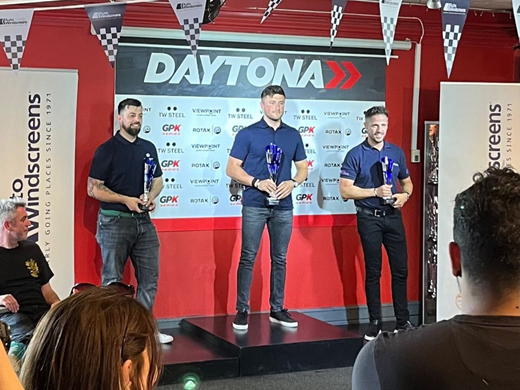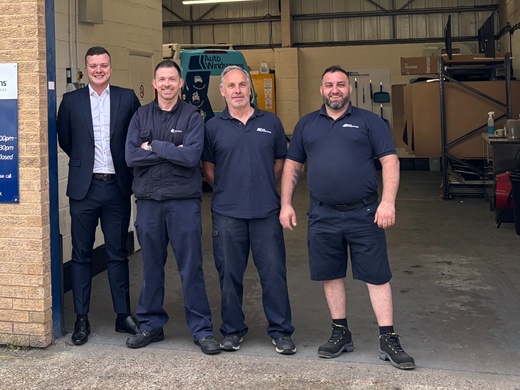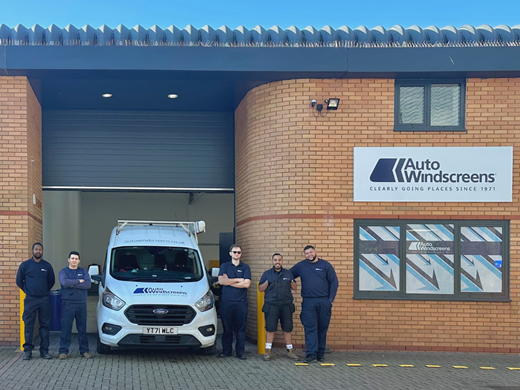Let's Talk About ADAS Forum Review
Let's Talk About ADAS Forum Review
Auto Windscreens took insurers and fleet managers to the Henry Ford Academy to discuss ADAS recalibration.
Despite considerable hype surrounding driverless cars and new technology, self-calibrating functionality in most vehicles is not anticipated to be a reality for another 10-15 years. We are in a period where Advanced Driver Assistance Systems (ADAS) recalibration following a windscreen replacement is an unavoidable must.
Following on from its conference in November, Auto Windscreens’ ‘Let’s Talk about ADAS Forum’ last month at the Henry Ford Academy delved further into the options available to fleets and insurers, with Ford’s Nigel Humphries, Technical Training Consultant, on hand to give insight into why adhering to manufacturer processes are vital to ensuring systems are functioning correctly.
What was clear from the session is that this is a complicated area of vehicle repair. Rupert Armitage, Auto Windscreens’ Managing Director, commented: “When it comes to ADAS, we’re faced with a fast-moving situation and the clearest picture we have been given around recalibration is from the manufacturers who have control over the technological design and development. Windscreens featuring ADAS still account for a relatively small amount of our workflow but it is growing rapidly.”
Delegates questioned the need to recalibrate vehicles, how they can provide the right insurance cover to customers, how costs can be kept to a minimum and just how recalibration works. While certain areas could be clarified more easily than others, it was clear that now is the time insurers and fleets need to carefully consider which approach they adopt within their businesses.
In order to ‘Bust the Myths’ Auto Windscreens outlines eight reasons they partner with manufacturers, highlighting why they believe this is the best solution to tackling windscreen recalibration in the current market:
8 Reasons to partner with manufacturers
1) Costs are fixed meaning no sky-high ‘surprise’ invoices. Auto Windscreens has a competitive fixed rates with manufacturers for windscreen recalibrations, meaning that – regardless of the screen type – our partners know what they will be invoiced for.
2) Manufacturer processes are always followed. Manufacturers are advised by their engineers about a vehicle’s recalibration needs and strict processes must be followed to ensure any assistance and safety features are working correctly. Dealerships have access to up-to-the-minute information for every single vehicle produced by their respective manufacturers, along with the correct data, processes, training and equipment.
3) It’s not just about warning lights. The main reason for a windscreen recalibration following the fitment of new glass is a vehicle’s mounted camera, which needs to be aligned to ensure it operates within the correct parameters. Other technologies may also require the same attention. Dealerships have the equipment to run not only a full recalibration but also a diagnostic check of the vehicle to ensure all systems are fully functioning.
4) One-stop service offered. By partnering with manufacturers, Auto Windscreens can book windscreen replacements/repairs in their dealerships so the screen can be fitted and recalibrated all in one location. This is proving to be the most popular option for customers, although they can also opt to have their glass replaced by a mobile technician at a location of their choice or at a designated Fitting Hub, with the recalibration organised at a manufacturer approved dealership on their behalf as soon as possible afterwards*. The in-dealership option has two clear benefits: 1) customer vehicles are repaired and recalibrated at one single appointment meaning less inconvenience to the customer. 2) While waiting for a windscreen to bond, the recalibration process can begin, reducing the time a customer has to wait and freeing our technician to move on to their next job.
5) No need for customer participation. Some recalibrations require a two-drive cycle, meaning two people need to be involved. Therefore, if a recalibration were to take place in a mobile location, a customer may be required to drive their vehicle with a technician as part of the recalibration, which could prove inconvenient and some customers might not be keen on having to drive around with someone they deem to be a ‘stranger’.
6) Dealerships know best test routes. Manufacturer dealership technicians will know the best routes to test drive for a successful recalibration. Recalibrations vary in time, but to give an example of a Ford Focus, it’s forward facing camera takes between 10 to 30 minutes of driving seeing dashed road markings and traffic as well as open road at 40-60mph to recalibrate.
7) Every vehicle can be recalibrated. Auto Windscreens can recalibrate all vehicles through its partnership with dealerships, meaning no customer will be turned away or left to organise the recalibration of their own vehicle because of its ADAS technology. Manufacturers have the equipment and expertise to recalibrate any vehicle, even those brand new to market.
8) Guaranteed recalibration success. By working with dealerships, we are confident that every recalibration will be a success and drivers will leave with their vehicle in exactly the same calibrated condition it was in prior to repair. While Auto Windscreens are experts in glass repairs/replacements, the manufacturers are the experts in recalibration.
* Auto Windscreens issues a disclaimer to all customers who opt to use its mobile service or Fitting Hubs. This alert drivers to the fact that their ADAS might not be functioning properly and should not be relied upon until recalibration has been completed.

Related Articles

A Thrilling Day of Racing
Nathan Aston from AST Signs beat Alex Magee of Hella Gutmann in the Grand Final of the Auto Windscreens Grand Prix 2024.
Friday, 21 June 2024

We Expand Team with 23 New Service Centre Managers
We have added 23 new Service Centre Managers across the UK to enhance our service and support our growing team technicians.
Friday, 24 May 2024

New Service Centre in North Circular Area
We've opened a new service centre in Park Royal to meet the rising ADAS calibration demand in and around London.
Thursday, 16 May 2024